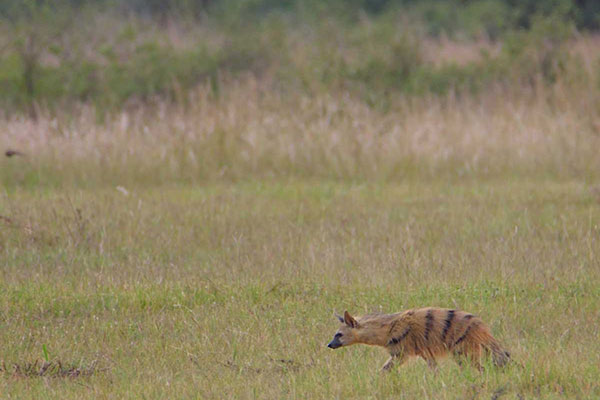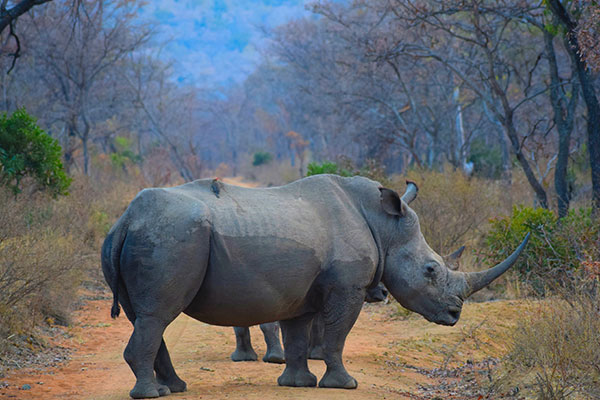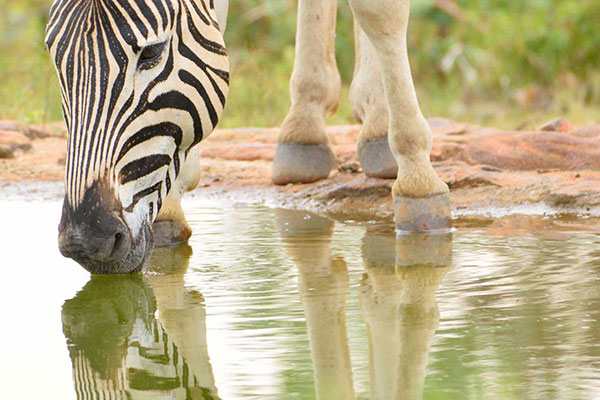Menu
Menu
Welgevonden Game Reserve is a pristine wilderness sanctuary spanning 37,000 hectares within the UNESCO Waterberg Biosphere. This protected area hosts an extraordinary diversity of wildlife, with over 50 mammal species and more than 300 bird species thriving in varied habitats. From the Big Five to the smallest insects, the reserve's ecosystem represents one of South Africa's most impressive conservation success stories.
 Zebra are among the many species thriving in Welgevonden's diverse habitats
Zebra are among the many species thriving in Welgevonden's diverse habitats
Please refer to our wildlife guides for a comprehensive list of birds and mammals in the area. These detailed guides provide information on all species you might encounter during your stay at Sekala Private Game Lodge.

The rugged Waterberg mountains create distinct habitats that support specialized species like klipspringer, rock hyrax, and various raptors that nest on cliff faces. These areas also feature unique plant communities adapted to the rocky terrain.

The sweeping grasslands provide ideal habitat for grazers like zebra, wildebeest, and white rhino. These areas also support cheetah, which need open terrain for their high-speed hunts, and numerous ground-nesting bird species.

The mixed woodland areas provide browsing opportunities for species like kudu, giraffe, and elephant. These areas also offer excellent cover for predators like leopard, which often rest in trees during the day, and support a wide variety of bird species.

The areas around rivers, streams, and waterholes support lush vegetation and attract a wide variety of wildlife. These zones are particularly important during the dry season when they serve as gathering points for many species, creating excellent wildlife viewing opportunities.
Secretary Bird, Black Korhaan, Southern Black Korhaan, Crowned Lapwing
Woodland Kingfisher, African Hoopoe, Southern Yellow-billed Hornbill, Green Wood-Hoopoe
Spotted Eagle-Owl, Verreaux's Eagle-Owl, Fiery-necked Nightjar, Freckled Nightjar
European Bee-eater, Steppe Buzzard, Yellow-billed Kite, Wahlberg's Eagle
With strict regulations limiting the number of vehicles in the reserve, animals experience less stress, resulting in more natural behavior and better wildlife viewing experiences.
The varied terrain of the Waterberg supports different ecosystems, from open grasslands to dense woodland and rocky outcrops, each hosting unique wildlife species.
An extensive network of roads provides access to different areas of the reserve, maximizing wildlife viewing opportunities in various habitats.
Our knowledgeable rangers know the best viewing locations and understand animal behavior, significantly enhancing your wildlife sighting opportunities.
State-of-the-art security measures and dedicated anti-poaching teams protect vulnerable species like rhino from poaching threats.
Ongoing wildlife monitoring and research programs help scientists better understand and protect the reserve's diverse species.
Careful management of vegetation, water resources, and wildlife populations ensures a balanced ecosystem that can support diverse species.
Sekala Private Game Lodge offers an exclusive luxury experience within the Welgevonden Private Game Reserve, a malaria-free Big 5 sanctuary in the UNESCO Waterberg Biosphere. Nestled in the magnificent Waterberg Mountains with spectacular views, abundant wildlife, and over 380 bird species, we provide an intimate wilderness experience with uncompromising comfort.
| Cookie | Duration | Description |
|---|---|---|
| cookielawinfo-checkbox-analytics | 11 months | This cookie is set by GDPR Cookie Consent plugin. The cookie is used to store the user consent for the cookies in the category "Analytics". |
| cookielawinfo-checkbox-functional | 11 months | The cookie is set by GDPR cookie consent to record the user consent for the cookies in the category "Functional". |
| cookielawinfo-checkbox-necessary | 11 months | This cookie is set by GDPR Cookie Consent plugin. The cookies is used to store the user consent for the cookies in the category "Necessary". |
| cookielawinfo-checkbox-others | 11 months | This cookie is set by GDPR Cookie Consent plugin. The cookie is used to store the user consent for the cookies in the category "Other. |
| cookielawinfo-checkbox-performance | 11 months | This cookie is set by GDPR Cookie Consent plugin. The cookie is used to store the user consent for the cookies in the category "Performance". |
| viewed_cookie_policy | 11 months | The cookie is set by the GDPR Cookie Consent plugin and is used to store whether or not user has consented to the use of cookies. It does not store any personal data. |